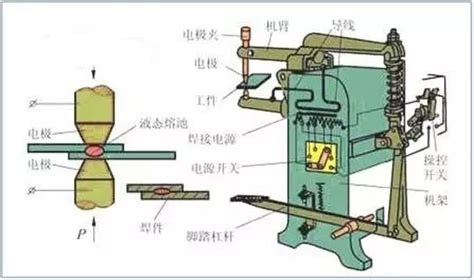焊接件
Title: Programming Welded Components: Techniques and Best Practices
In modern manufacturing, welding plays a crucial role in joining materials to create sturdy structures and components. However, the process of programming welded components involves more than just fusing metal together. It requires precision, understanding of materials, and adherence to safety standards. In this guide, we'll delve into the techniques and best practices for programming welded components.
Understanding Welding Processes:
Before diving into programming, it's essential to understand the different welding processes available. The choice of welding technique depends on factors such as material type, thickness, desired strength, and project requirements. Common welding processes include:
1.
MIG/MAG (Metal Inert Gas/Metal Active Gas) Welding
: Utilizes a consumable wire electrode and inert or active shielding gases.2.
TIG (Tungsten Inert Gas) Welding
: Uses a nonconsumable tungsten electrode and inert gas for welding.3.
Stick Welding (SMAW Shielded Metal Arc Welding)
: Involves a fluxcoated electrode and is suitable for outdoor or windy conditions.4.
FluxCored Arc Welding (FCAW)
: Similar to MIG welding but uses a tubular wire filled with flux.5.
Submerged Arc Welding (SAW)
: Involves feeding a continuous, consumable solid or tubular electrode into the weld pool.Each welding process has its advantages and limitations, so selecting the right one is crucial for successful component fabrication.
Programming Welded Components:
Programming welded components involves converting design specifications into machinereadable instructions for automated welding systems. Here's a stepbystep guide:
1.
Design Analysis
: Begin by thoroughly analyzing the design requirements, including material specifications, joint configurations, and tolerances. This analysis helps determine the most suitable welding process and parameters.2.
CAD/CAM Software Integration
: Utilize ComputerAided Design (CAD) software to create precise digital models of the components. These models serve as the foundation for generating toolpaths and programming the welding equipment.3.
Toolpath Generation
: Using ComputerAided Manufacturing (CAM) software, generate toolpaths based on the CAD models. Toolpaths define the trajectory and orientation of the welding torch relative to the workpiece surface. Consider factors such as joint accessibility, weld bead geometry, and travel speed during toolpath generation.4.
Parameter Setting
: Determine the optimal welding parameters, including voltage, current, wire feed speed, travel speed, and gas flow rate. These parameters vary based on material type, thickness, joint configuration, and welding process. Conduct test welds to finetune the parameters and ensure quality and consistency.5.
Simulation and Verification
: Before executing the program on the actual welding equipment, perform simulation and verification using virtual welding software. Simulation helps identify potential issues such as collision, interference, or inadequate weld penetration. Make necessary adjustments to the program based on simulation results.6.
Safety Measures
: Prioritize safety throughout the programming process. Ensure that all equipment is properly maintained, operators are trained in welding safety protocols, and appropriate personal protective equipment (PPE) is worn.7.
Documentation and Version Control
: Maintain detailed documentation of the welding programs, including revision history, parameter settings, and any modifications made. Version control ensures traceability and facilitates future revisions or troubleshooting.Best Practices for Programming Welded Components:
1.
Accuracy and Precision
: Strive for accuracy and precision in toolpath generation to achieve consistent weld quality and dimensional accuracy.2.
Optimization for Efficiency
: Optimize welding parameters and toolpaths to minimize cycle time and material waste without compromising weld integrity.
3.
Adaptability to Variations
: Anticipate variations in material properties, joint fitup, and environmental conditions, and incorporate adaptive welding techniques or sensor feedback systems to maintain weld quality.4.
Quality Assurance
: Implement quality control measures such as nondestructive testing (NDT), visual inspection, and weld monitoring to ensure compliance with industry standards and customer requirements.5.
Continuous Improvement
: Continuously evaluate and refine welding programs based on feedback from production, inspection data, and technological advancements to enhance efficiency and quality.By following these techniques and best practices, manufacturers can effectively program welded components to meet stringent quality standards and achieve optimal performance in various applications.
本文 新鼎系統网 原创,转载保留链接!网址:https://acs-product.com/post/18842.html
免责声明:本网站部分内容由用户自行上传,若侵犯了您的权益,请联系我们处理,谢谢!联系QQ:2760375052 版权所有:新鼎系統网沪ICP备2023024866号-15








